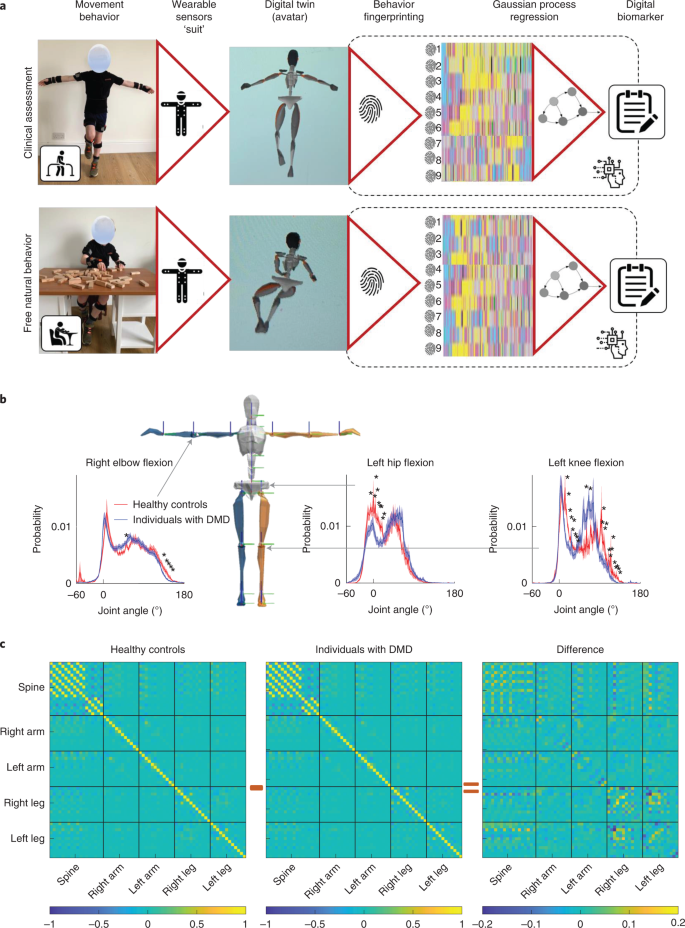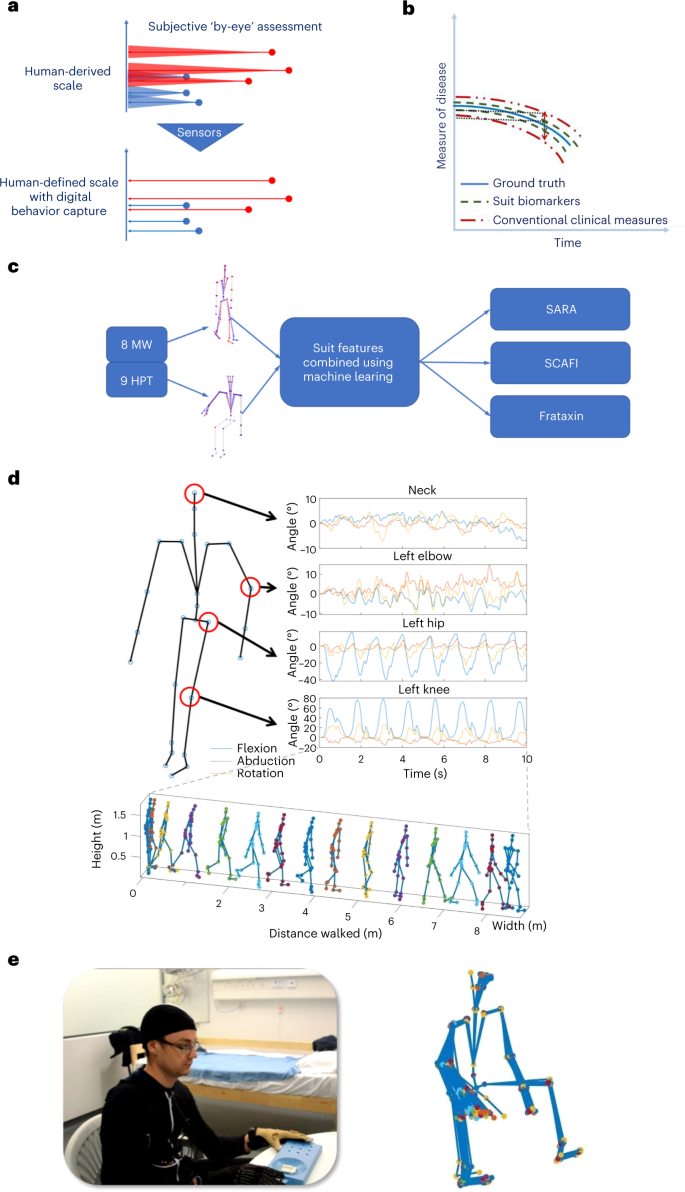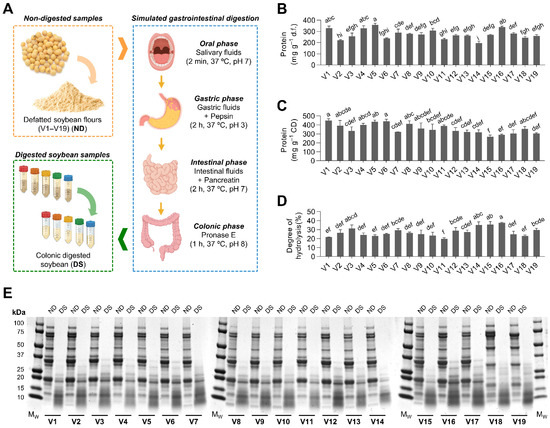- 学際的な研究チームが、モーションキャプチャ技術とAIを用いて運動障害の進行状況を監視する方法を開発しました。
A multi-disciplinary team of researchers has developed a way to monitor the progression of movement disorders using motion capture technology and AI.
- 日常生活動作のウェアラブル全身モーショントラッキングがデュシェンヌ型筋ジストロフィーの疾患経過を予測する Wearable full-body motion tracking of activities of daily living predicts disease trajectory in Duchenne muscular dystrophy
- ウェアラブル・モーションキャプチャ・スーツと機械学習により、フリードライヒ失調症の病勢進行を予測 A wearable motion capture suit and machine learning predict disease progression in Friedreich’s ataxia
学際的な研究チームが、モーションキャプチャ技術とAIを用いて運動障害の進行状況を監視する方法を開発しました。 A multi-disciplinary team of researchers has developed a way to monitor the progression of movement disorders using motion capture technology and AI.
2023-01-22 インペリアル・カレッジ・ロンドン(ICL)
◆DMDとFAは、運動に影響を与え、最終的に麻痺に至る、まれな変性遺伝性疾患です。現在、どちらの疾患も治療法は確立されていませんが、今回の研究成果により、新たな治療法の探索が大幅に加速されることが期待されます。FAやDMDの進行状況の追跡は、通常、臨床環境での集中的な検査によって行われる。今回の論文は、収集したデータの正確さと客観性を高め、より精密な評価を可能にするものである。研究者らは、これらの疾患マーカーを用いることで、現在の方法と比較して、新薬の開発に必要な患者数が大幅に少なくなると推測しています。これは、適切な患者を特定することが困難な希少疾患において特に重要である。
◆両試験の共著者であるMRCロンドン医学研究所およびインペリアル大学脳科学科のリチャード・フェステンシュタイン教授は、次のように述べています。「患者や家族は自分の病気の進行状況を知りたがることが多く、モーションキャプチャ技術とAIを組み合わせることで、こうした情報を提供できるようになるかもしれません。この研究が、希少な運動障害の臨床試験を変革し、人間のパフォーマンスレベルを超える患者の診断とモニタリングを改善する可能性を持っていることを期待しています。”
◆DMDに焦点を当てた研究では、インペリアル、グレート・オーモンド・ストリート病院、ユニバーシティ・カレッジ・ロンドンの研究者と臨床医が、DMDの子供21人と年齢を合わせた健康なコントロール17人に身体装着型センサースーツを試用しました。子どもたちは、6分間歩行テストなどの標準的な臨床評価や、昼食や遊びなどの日常生活を送る際にセンサーを装着しました。
◆FA研究では、インペリアル大学、運動失調センター、UCLクイーンスクエア神経研究所、MRCロンドン医科大学のチームが患者さんと協力して、主要な動作パターンを特定し、疾患の遺伝子マーカーを予測することに成功しました。FAは最も一般的な遺伝性運動失調症で、DNAの異常に大きなトリプレットリピートによってFA遺伝子のスイッチがオフになることで発症します。この新しいAI技術を用いることで、研究チームは、患者から生体試料を採取することなく、FA遺伝子の「スイッチオフ」を正確に予測し、その活性度を測定することができました。研究チームは、9人のFA患者とマッチングした対照者において、運動失調症SARAの障害レベルを判定するための評価尺度や、歩行、手や腕の動き(SCAFI)などの機能評価を実施することができた。そして、これらの検証された臨床評価の結果を、同じ患者および対照群に対して新しい技術を使用して得られた結果と比較しました。後者の方がより高い感度で病気の進行を予測することができました。
◆どちらの研究でも、センサーからのすべてのデータが収集され、個々のアバターを作成し、動きを分析するためのAI技術に供給されました。この膨大なデータセットと強力なコンピューティングツールにより、研究者は、DMDの子どもやFAの成人に見られる主要な動きのフィンガープリントを定義することができ、対照群とは異なることが明らかになりました。これらのAIベースの動作パターンの多くは、DMDやFAにおいてこれまで臨床的に説明されたことがありませんでした。
◆また、この新しいAI技術は、現在の標準的な評価と比較して、個々の患者の病気が6カ月間でどのように進行するかの予測も大幅に改善できることも発見しました。このような正確な予測により、臨床試験をより効率的に実施し、患者が新しい治療法をより早く利用できるようになるとともに、薬剤の投与量をより正確に設定できるようになります。
◆この新しい全身運動計測の分析方法は、臨床チームに明確な疾患マーカーと進行予測を提供します。これらは、新しい治療法の効果を測定するための臨床試験において、非常に重要なツールとなります。
<関連情報>
- https://www.imperial.ac.uk/news/242711/wearable-tech-ai-clinical-teams-join/
- https://www.nature.com/articles/s41591-022-02045-1
- https://www.nature.com/articles/s41591-022-02159-6
日常生活動作のウェアラブル全身モーショントラッキングがデュシェンヌ型筋ジストロフィーの疾患経過を予測する Wearable full-body motion tracking of activities of daily living predicts disease trajectory in Duchenne muscular dystrophy
Valeria Ricotti,Balasundaram Kadirvelu,Victoria Selby,Richard Festenstein,Eugenio Mercuri,Thomas Voit & A. Aldo Faisal
Nature Medicine Published19 January 2023
DOIhttps://doi.org/10.1038/s41591-022-02045-1

Abstract
Artificial intelligence has the potential to revolutionize healthcare, yet clinical trials in neurological diseases continue to rely on subjective, semiquantitative and motivation-dependent endpoints for drug development. To overcome this limitation, we collected a digital readout of whole-body movement behavior of patients with Duchenne muscular dystrophy (DMD) (n = 21) and age-matched controls (n = 17). Movement behavior was assessed while the participant engaged in everyday activities using a 17-sensor bodysuit during three clinical visits over the course of 12 months. We first defined new movement behavioral fingerprints capable of distinguishing DMD from controls. Then, we used machine learning algorithms that combined the behavioral fingerprints to make cross-sectional and longitudinal disease course predictions, which outperformed predictions derived from currently used clinical assessments. Finally, using Bayesian optimization, we constructed a behavioral biomarker, termed the KineDMD ethomic biomarker, which is derived from daily-life behavioral data and whose value progresses with age in an S-shaped sigmoid curve form. The biomarker developed in this study, derived from digital readouts of daily-life movement behavior, can predict disease progression in patients with muscular dystrophy and can potentially track the response to therapy.
ウェアラブル・モーションキャプチャ・スーツと機械学習により、フリードライヒ失調症の病勢進行を予測 A wearable motion capture suit and machine learning predict disease progression in Friedreich’s ataxia
Balasundaram Kadirvelu,Constantinos Gavriel,Sathiji Nageshwaran,Jackson Ping Kei Chan,Suran Nethisinghe,Stavros Athanasopoulos,Valeria Ricotti,Thomas Voit,Paola Giunti,Richard Festenstein & A. Aldo Faisal
Nature Medicine Published:19 January 2023
DOI:https://doi.org/10.1038/s41591-022-02159-6

Abstract
Friedreichʼs ataxia (FA) is caused by a variant of the Frataxin (FXN) gene, leading to its downregulation and progressively impaired cardiac and neurological function. Current gold-standard clinical scales use simplistic behavioral assessments, which require 18- to 24-month-long trials to determine if therapies are beneficial. Here we captured full-body movement kinematics from patients with wearable sensors, enabling us to define digital behavioral features based on the data from nine FA patients (six females and three males) and nine age- and sex-matched controls, who performed the 8-m walk (8-MW) test and 9-hole peg test (9 HPT). We used machine learning to combine these features to longitudinally predict the clinical scores of the FA patients, and compared these with two standard clinical assessments, Spinocerebellar Ataxia Functional Index (SCAFI) and Scale for the Assessment and Rating of Ataxia (SARA). The digital behavioral features enabled longitudinal predictions of personal SARA and SCAFI scores 9 months into the future and were 1.7 and 4 times more precise than longitudinal predictions using only SARA and SCAFI scores, respectively. Unlike the two clinical scales, the digital behavioral features accurately predicted FXN gene expression levels for each FA patient in a cross-sectional manner. Our work demonstrates how data-derived wearable biomarkers can track personal disease trajectories and indicates the potential of such biomarkers for substantially reducing the duration or size of clinical trials testing disease-modifying therapies and for enabling behavioral transcriptomics.


